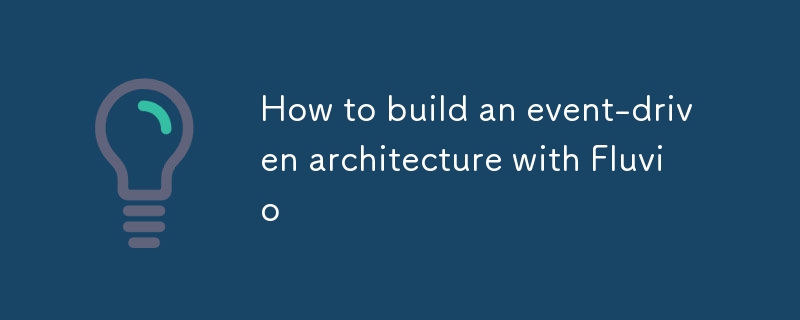

Get started on a journey into the world of event-driven architecture with Fluvio. This powerful platform offers a streamlined approach to building real-time, scalable, and resilient applications. By leveraging Fluvio's capabilities, you can unlock the full potential of event-driven design and create innovative solutions that meet the demands of today's dynamic environments.
In this guide, we'll delve into the intricacies of Fluvio, exploring its key features, benefits, and practical implementation strategies. You'll learn how to utilize the power of event-driven architecture to build applications that are responsive, scalable, and efficient.
Imagine you're hosting a party. You want to notify everyone when the pizza arrives. Instead of shouting to each guest individually, you could simply announce it once, and everyone who's interested in pizza will hear and react accordingly.
This is essentially the concept of event-driven architecture. It's a design pattern where components of a system communicate by producing and consuming events. Think of it as a way to create a more dynamic and responsive system, similar to how your party guests react to your announcement.
Now, let's introduce Pub/Sub.
Imagine you're the party host (the publisher). When the pizza arrives, you publish an event called "Pizza Is Here.". Your guests (the subscribers) can subscribe to this event. When they hear your announcement (the event), they'll take action (e.g., grab a slice).
In a pub/sub system, the publisher sends out events, and subscribers can choose to listen to specific events. This decouples the components, making the system more scalable, flexible, and resilient.
Here's a more technical breakdown:
Imagine a social media platform. When a user posts a new message, that's an event. Other users who follow that user can subscribe to their posts and receive notifications whenever a new message is published.
Key benefits of Pub/Sub:
Note: I found an interesting video that can help you easily understand the concept; here is the link.
Fluvio's exceptional performance and efficiency make it a standout choice for real-time data processing. Its low-latency capabilities ensure that data is processed swiftly, enabling applications to respond to events in a timely manner. Furthermore, Fluvio's lightweight design and optimized architecture minimize resource consumption, making it suitable for even the most resource-constrained environments.
Fluvio's rich API support and customizable stream processing capabilities make it a developer's dream. With client libraries available for popular programming languages, you can easily integrate Fluvio into your existing applications. The platform's programmability allows you to tailor data processing pipelines to meet your specific requirements, ensuring maximum flexibility and control.
Moreover, Fluvio's WebAssembly integration enables you to securely execute custom stream processing logic, providing a powerful and efficient way to extend the platform's capabilities.
Please read the article via this website for detailed implementation and better visualizations.
In this article, we talked about one of the greatest architecture in programming: Pub/Sub, a fundamental component of event-driven architecture. It provides a robust and scalable foundation for event-driven architectures, enabling loosely coupled, asynchronous communication between components. In addition, we used Fluvio to demonstrate the architecture by allowing the publisher to generate quote every 7 seconds to the Consumer. Clearly, this framework provides us an easy approach to event-driven architecture.
If you guys want me to continue this approach in LLMs applications or develop it further,. You guys can comment to let me know!
Thank you for reading this article; I hope it added something to your knowledge bank! Just before you leave:
?ぜひ「いいね」ボタンを押してフォローしてください。それは私にとって大きなモチベーションになります。
?コードの詳細については、Github
を参照してください。?フォローしてください: LinkedIn |ギットハブ
The above is the detailed content of How to build an event-driven architecture with Fluvio. For more information, please follow other related articles on the PHP Chinese website!




